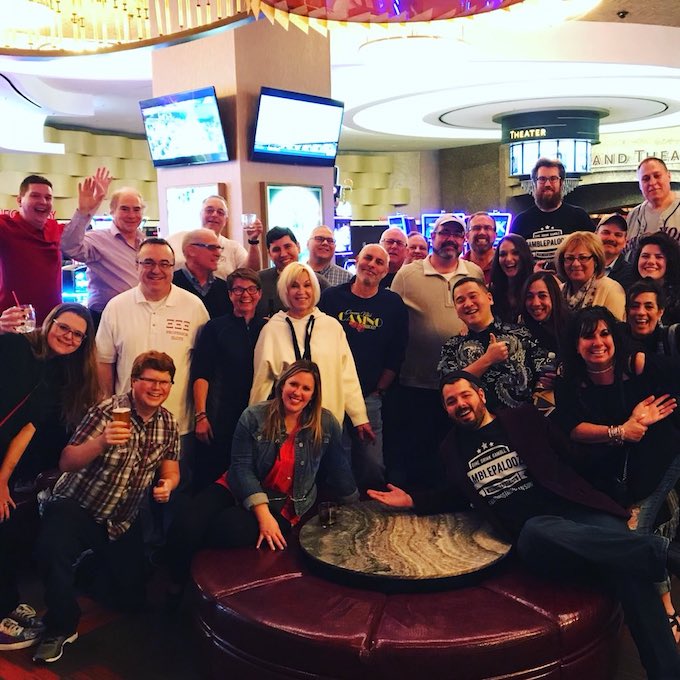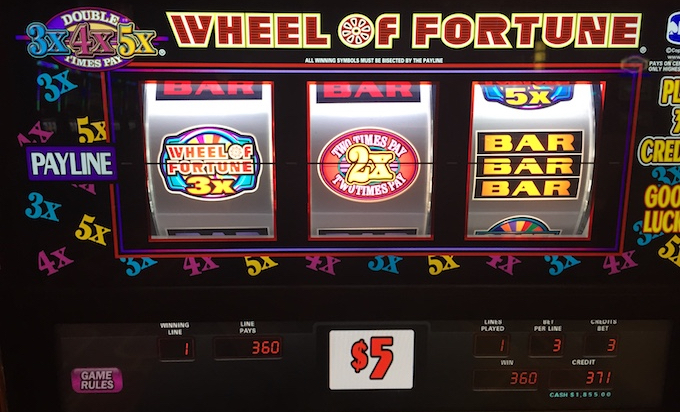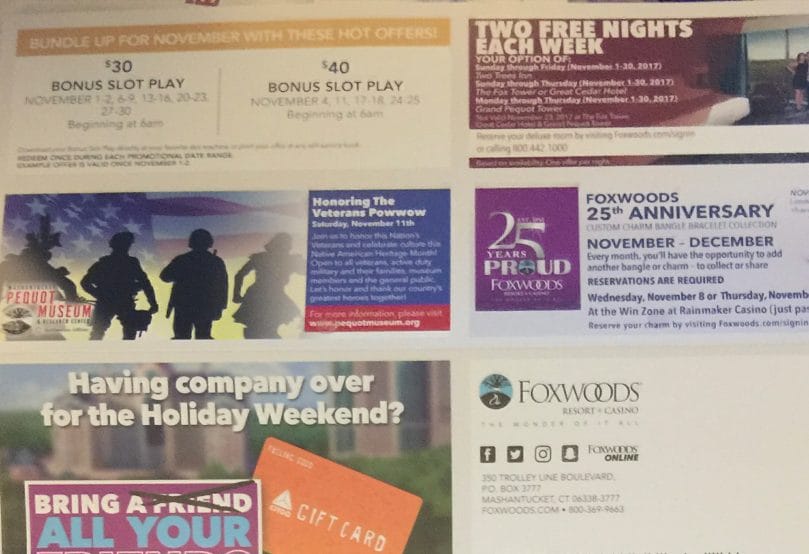Foxwoods Slots Payouts
Via YouTube Capture.I hope you enjoy my videos, and do not forget to leave your I like and comments. Subscribe here please. Thank you.Wheel of fortune live. Foxwoods Resort Casino: Good Payouts! - See 2,947 traveler reviews, 552 candid photos, and great deals for Mashantucket, CT, at Tripadvisor. Making generalizations about slots payback percentages based on games’ coin size isn’t a guaranteed plan. LOUISIANA SLOT MACHINE PAYBACK STATISTICS. In Fiscal Year 2008/2009, coinciding with the last year of the relatively recent 17-month-long Great Recession, Foxwoods Casino Connecticut had 8,108 slot machines. Connecticut Slots Community Connecticut Slot Machine Casino Gambling in 2020 Payouts and Returns in Connecticut Theoretical payout limits have not been set in Connecticut’s tribal-state compacts with the tribes owning the Mohegan Sun and Foxwoods casinos.
- Foxwoods Slot Payout Today
- Foxwoods Slot Payouts
- Foxwoods Slot Payouts By Machine
- Foxwoods Slot Payout Percentage
Some people might want to know how to find the payout percentage on a slot machine. Sadly, it’s not something that’s printed on most games — at least not here in the United States.
This post is for them.
Understanding this topic involves some rudimentary understanding of probability as it relates to casino gambling. You’ll need to understand three separate concepts thoroughly:
- Payback percentage
- House edge
- Return to player
This post explains each of those in enough detail that even a beginner should understand what they mean.
Some Basic Facts Related to Probability, the House Edge, Payback Percentage, and Return to Player
Probability is the branch of mathematics that deals with how likely an event is to happen. If you want to measure how likely you are to win a jackpot on a slot machine, probability is the way to figure that out.
But the word also refers directly to that likelihood.
In other words, if I say the probability of getting heads when I flip a coin is 50%, I’m not talking about that branch of mathematics. I’m talking about the actual statistical likelihood of that event.
You should understand a few things about probability in general.
Probability is always a number between 0 and 1. An event with a probability of 0 will never happen, and an event with a probability of 1 will always happen. The closer to 1 the probability is, the more likely the event is to happen.
Probability can be expressed multiple ways. It can be expressed as a fraction, a decimal, a percentage, or as odds. The probability of getting heads on a coin flip can be expressed as 1/2, 0.5, 50%, or 1 to 1.
An event’s probability is the number of ways it can happen divided by the total number of possible outcomes. When you’re discussing a coin toss, you have two possible outcomes. Only one of those is heads. That makes the probability 1/2.
The probability that an event will occur added to the probability that an event won’t occur always equals 1. Therefore, if you know the probability that something will happen, you also automatically know the probability that it won’t happen, and vice versa.
The house edge is a statistical measure of how much the house expects to win (on average, over the long run) from every bet you make on a game. The house edge is a theoretical number that accounts for the probability of winning versus the probability of losing AND the payout if you win.
All casino games carry a house edge. In the short run, it doesn’t matter much, but in the long run, it’s the most important thing.
If I say a game has a house edge of 4%, this means that over time, you should average a loss of $4 for every $100 you bet on the game. This is a long run statistical average, though. In the short run, you’re unlikely to see results that mirror the house edge.
The return to player and the payback percentage are the same thing. Some writers use one to refer to the statistical expectation and the other to refer to the actual results, but most writers use these terms interchangeably.
The payback percentage added to the house edge always equals 100%. The payback percentage is the amount of each bet that you get back, and the house edge is the amount of each bet that the casino wins. Again, these numbers are on average over the long run.
A game with a 4% house edge has a 96% payback percentage.
In the United States, slot machine payback percentages are impossible to calculate and not posted on gambling machines. To calculate the house edge or the payback percentage for a casino game, you need two pieces of data:
- The probability of winning
- The amount of money you’ll win (the payoff)

Slot machines include their payouts on their pay tables, but they don’t include the probability of achieving any of the winning outcomes.
In some countries, the payback percentage is posted on the machines, but not in the United States.
To make things even worse for a slot machine player, the random number generator program can be set differently even if the slot machine is identical to the one next to it. You could be playing The Big Lebowski slots at Choctaw Casino in Durant, Oklahoma, and your buddy could be playing the identical machine right next to you.
The payback percentage on his machine might be 94%, and the payback percentage on your machine might only be 88%.
The difference comes from how the probabilities are weighted for each symbol. On one game, the bars might show up 1/4 of the time, but on the next, they might only come up 1/8 of the time.
This has an obvious effect on the payback percentage.

The payback percentage would be easy to calculate if you knew the probabilities. The payback percentage is just the total expected value of all the possible outcomes on the machine.
Let’s assume you have 1000 possible reel combinations. Let’s also assume that if you got each of those in order, from 1 to 1000, you’d win 900 coins.
The payback percentage for that game would be 90%.
You’d put 1000 coins in, and you’d have 900 coins left after a statistically perfect sampling of 1000 spins.
If you knew the payback percentage and house edge for a slot machine game, you could predict your theoretical cost of playing that game per hour in the long run. You’d only need to multiply the numbers of bets you made per hour by the size of those bets. Then you’d multiply that by the house edge to get your predicted loss.
Most slots players make 600 spins per hour. Let’s assume you’re playing on a dollar machine and betting three coins on every spin, or $3 per spin. You’re putting $1,800 per hour into action.
If the slot machine had a 90% payback percentage, you’d lose $180 per hour on that machine. You’d have $1,800 at the start of the hour and $1,620 at the end of the hour — assuming you saw statistically predicted results.
In the real world, though, where you’d be seeing short-term results, you’d see some hours where you won and some hours where you lost. If you played long enough, the Law of Large Numbers would ensure that you’d eventually see the statistically predicted results.
But in the long run, the math will ensure that the casino will win a net profit.
How You Could Calculate a Payback Percentage Based on Actual Results
Foxwoods Slot Payout Today
Of course, you have some data that you can directly observe when you’re playing slot machines.
But tracking this data and calculating the payback percentage on a specific session can add to your enjoyment of any slot machine game. It can make you more mindful because you’ll be paying more attention to what’s happening.
Here’s how to do it.
Start by tracking how many spins you’re making per hour. This is easy to do, but it takes more effort than you might think. It might help to get one of those clicky things people use to count stuff with. You will probably also need a stopwatch of some kind. I just use the timer function on my phone.
Make a note (mental is fine) of how much you’re betting per spin. It helps to bet the same amount.
Also note how much money you started with so that you can calculate how much you’ve won or lost. The slot machine will convert your money into credits. The easiest thing to do is to keep up with how many credits you had at the beginning of the session and again at the end of the session.
Now, let’s do the math using a hypothetical 45-minute session.
I made 300 spins in 45 minutes. I was betting $3 per spin, and I started with $600.
After my playing session, I had $500 left. At times I was up, and at times I was down.
But my net loss was $100. (My starting bankroll was $600, and I finished with $500.)
Over 300 spins, that means I lost an average per spin of 33 cents. $100 in losses divided by 300 spins is 33.33 cents per spin.
How much was I betting per spin?
Since I was playing a $1 machine, and my max bet was three coins, I was risking $3 per spin.
33 cents is 11% of $3, which means my actual loss was 11%. The machine paid back 89% for the session.
Does this mean that the payback percentage for the machine is 89%?
Probably not.
In the scheme of things, 450 spins is a small sample size. To have any confidence in your statistics, you really need to have at least 5,000 spins under your belt.
Even then, depending on how volatile the game is, your actual results might be wildly different from the mathematically expected payback percentage.
Here’s another example that will prove that point.
My friend Leo went to the Winstar last weekend and played the $5 slots. He started with $3,000, and when he left, he had $4,800, which means he had an $1,800 profit for the day.
He played for seven hours.
I’ve watched Leo play. He’s slow, but not much slower than average. He makes about 500 spins per hour.
This means that he made about 3,500 spins.
$1,800 in winnings divided by 3,500 spins is an average win of 51 cents per spin.
Since he was betting $5 per spin, his return was 10.3%.
His actual return for the trip on that slot machine was 110.3%.
I have friends who design slot machines for a living — more than one, in fact. They’ll be happy to tell anyone who asks that the algorithm is never set up to have a payback percentage of more than 100%.

What About the Casinos That Advertise a Specific Payback Percentage?
Some casinos advertise a specific payback percentage. This is almost always stated as an “up to” number.
So you might see an ad for a casino that says, “Payback percentages up to 98%!”
They’re almost certainly telling the truth, too. They probably have one slot machine in their casino that has a payback percentage of 98%. Of course, it isn’t labeled, so you don’t know which one it is.
And in the short run, which is what you’re going to be playing in as an individual gambler, there’s not much difference between a 98% payback percentage and a 92% payback percentage. You could walk away a winner or a loser at either setting.
Also, keep in mind that the games aren’t designed to tighten up after a win and loosen up after a lot of losing spins. That’s not how it works at all.
The machines are designed to allow you to win a certain specific percentage of the time because of the probability. Then there’s an average amount that you’ll win based on the payout for the specific combination of symbols that you hit.
But every spin of the reels on a slot machine is an independent event. You can hit a jackpot on a spin, and your probability of hitting the jackpot on the next spin hasn’t changed at all.
What About the Denominations and Location Reports I See Advertised on the Internet?
You’ll find websites like Strictly Slots and American Casino Guide which post payback percentages for specific denominations and specific casinos. These are AVERAGES.
These averages have little bearing on the machine that you’re sitting in front of.
For example,
you might be looking at a casino that reports an average payback percentage of 94% on its dollar slot machines. That casino might have half their machines paying off at 90% and the other half paying off at 98%.
And you won’t be able to differentiate between the two because the hit ratio might be the same from one of those machines to another.

What Do Hit Ratio and Volatility Have to Do With It?
The hit ratio is the percentage of time that you can expect to hit a winning combination on a slot machine. Something like 30% isn’t unusual, but it can vary 10% or more in either direction. The casinos want you to a hit a winning combination often enough that you won’t lose interest in playing the game.
But hit ratio is only part of the equation. The average size of the prize amounts is also important. Volatility takes this into account. A game that hits less often but has higher average prize amounts might have the same payback percentage as a game that hits more often but with lower payouts.
Either way, in the short run, it will be all but impossible to discover this number, too.
If you wanted to, you could track how many spins resulted in wins for you and calculate the percentage, but you’re facing the same obstacle you are with the overall payback percentage of the machine.

You just don’t know what it’s programmed to accomplish in the long run.
Online Slot Machines
Some online casinos post the payback percentages for their slot machine games. I think this information is of limited use, but I also think it’s fairer to the gambler than not providing them with that information.
After all, table games are transparent. You can calculate the house edge for any casino table game there is because they all use random number generators with known quantities — cards, dice, and wheels.
There’s been a push to label food, both at the grocery store and at restaurants, with nutritional information that includes caloric amounts.
Requiring casinos to provide similar information about their gambling machines only makes sense.
We’ll see if it ever happens, though.
Conclusion
You can’t find the payout percentage on a slot machine — at least not in the United States.
I’ve heard that you can get this information on slot machines in Europe, but I’ve never seen an actual photograph of this kind of labeling.
You can, though, have some fun calculating actual payback percentages in the short run. This at least gives you something to keep track of while you’re playing slots, which is honestly one of the more mindless activities in the casino.
Introduction to Connecticut Slot Machine Casino Gambling in 2020
Connecticut slot machine casino gambling consists of two American Indian tribal casinos. Proposed casinos include another tribal casino and Connecticut’s first commercial casino, both stalled with ongoing delays.
I’ve dedicated this weekly series to slot enthusiasts such as yourself as you master casino slots and win your way to success by using this State-By-State Online Resource to improve your slots gambling performance by reviewing your state’s slots gaming industry.
Keep Reading … Or Watch Instead!
Or … Listen Instead!
Foxwoods Slot Payouts
Subscribe to my Professor Slots podcast at Apple Podcasts Google Podcasts Spotify Amazon Music Amazon Audible Gaana Stitcher Pandora iHeart Radio Tune-In SoundCloud RadioPublic Deezer RSS and everywhere else you find your podcasts!
Relevant Legal Statutes on Gambling in Connecticut*
The minimum legal gambling age in Connecticut depends upon the gambling activity:
- Land-Based Casinos: 21
- Poker Rooms: 21
- Bingo: 18
- Lottery: 18
- Pari-Mutuel Wagering: 18
Pari-mutuel wagering has had a long history in Connecticut, including dog and horse racing tracks and the sport of jai alai. Since 2005, only Off-Track Betting (OTB) facilities exist in Connecticut.
Slot Machine Private Ownership in Connecticut
It is illegal to own a slot machine privately in the state of Connecticut.
Gaming Control Board in Connecticut
Connecticut’s two tribal casinos have tribal gaming agencies, including enforcement, as outlined in their tribal-state gaming compacts.
Further, the state of Connecticut has its Gaming Division, which provides oversight of gaming activities at tribal casinos as well as regulates sports betting at all OTB locations.
Connecticut’s remaining state gaming control boards are the Charitable Games Section of the Gaming Division and the Connecticut Lottery Corporation.
Through their Mohegan Gaming and Entertainment venture, the Mohegan Tribe has expanded its gaming interests to international levels. In 2019, they won the contract to operate two casinos near Niagara Falls for the Ontario Province of Canada.
If completed and approved, Connecticut’s tribes will jointly operate a satellite casino proposed for East Windsor, not located on either’s tribal reservations.
Casinos in Connecticut
Connecticut has two American Indian tribal casinos.
The largest casino in Connecticut is Mohegan Sun with 2,524 gaming machines in October 2020.
The second-largest casino is Foxwoods Resort Casino with 2,333 gaming machines in October 2020.
The Mohegan Sun and Foxwoods casinos compete, always striving to be better than the other. This ongoing competition is to the advantage of slots players as well as resulting in these two tribal casinos having a world-wide reputation.
A proposed casino in East Windsor is a joint venture of the tribal owners and operators of Mohegan Sun and Foxwoods, called MMCT Venture. MGM has sought to block the casino project since 2015, essentially to protect its MGM Springfield casino in western Massachusetts as well as Connecticut’s MGM Bridgeport in southwest Connecticut.
If the proposed MGM Bridgeport also opens, perhaps as early as 2022, it will become the second-largest casino in Connecticut.
Commercial Casinos in Connecticut
There are no non-tribal casinos in Connecticut with slot machines.
Tribal Casinos in Connecticut
The two tribal casinos in Connecticut are:
- Foxwoods Resort Casino in Ledyard, 50 miles southeast of Hartford and 60 miles southwest of Providence, Rhode Island.
- Mohegan Sun in the town of Montville, the east end of the area known as Uncasville, 17 miles west of Foxwoods Casino.
Other Gambling Establishments
As an alternative to enjoying Connecticut slot machine casino gambling, consider exploring casino options in a nearby state. Bordering Connecticut is:
- North: Massachusetts Slots
- East: Rhode Island Slots
- West: New York Slots
Each of the links above will take you to my blog for that neighboring U.S. state to Connecticut.
Our Connecticut Slots Facebook Group
Are you interested in sharing and learning with other slots enthusiasts in Connecticut? If so, join our Connecticut slots community on Facebook. All you’ll need is a Facebook profile to freely join this closed Facebook Group community.
There, you can meet online and privately share your slots experiences with local slots enthusiasts about playing slot machines in Connecticut. Join us!
Foxwoods Slot Payouts By Machine
Payouts and Returns in Connecticut
Theoretical payout limits have not been set in Connecticut’s tribal-state compacts with the tribes owning the Mohegan Sun and Foxwoods casinos.
However, monthly return statistics by casino are publicly available, including both casino hold% and player win%.
For October 2020, the player win percentages are:
- Foxwoods: 91.40%
- Mohegan Sun: 91.78%
Foxwoods Slot Payout Percentage
Summary of Connecticut Slot Machine Casino Gambling in 2020
Connecticut slot machine casino gambling consists of two tribal casinos, Mohegan Sun and Foxwoods, alongside two proposed casinos, MGM Bridgeport and Tribal Winds Casino in East Windsor.
Annual Progress in Connecticut Slot Machine Casino Gambling
Over the last year, both proposed casinos continue to undergo significant delays.
Related Posts from Professor Slots
Other States from Professor Slots
- Previous: Colorado Slot Machine Casino Gambling
- Next: Delaware Slot Machine Casino Gambling
Have fun, be safe, and make good choices!
By Jon H. Friedl, Jr. Ph.D., President
Jon Friedl, LLC